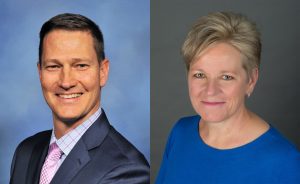June 2025 | Volume 18, Issue 3

Photo of a bridled titmouse by ABR Trustee Daniel C. Davis, MD

Summer’s the Time to Prepare for What’s Coming
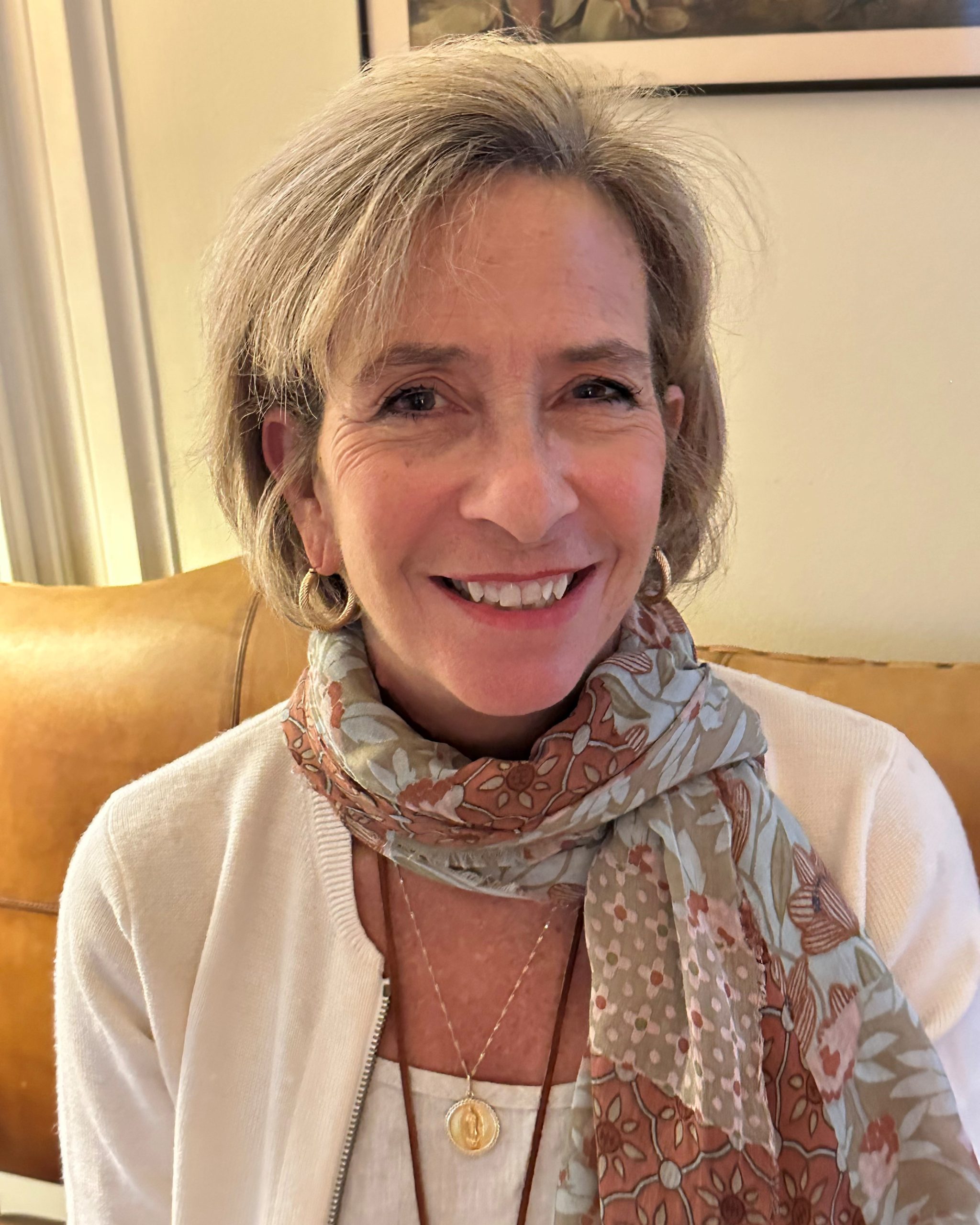 By Desiree Morgan, MD, ABR Governor
By Desiree Morgan, MD, ABR Governor
2025;18(3):1
Summer is upon us, and it is a time when our family schedules tend to be more relaxed and easy. For anyone working in an academic medical center, though, we are anything but relaxed and easy, professionally speaking. This season marks the turnover of trainees and their advancement to the next level. As part of the readiness to greet the new academic year, we spend time looking under the hood, so to speak, at the educational program’s procedures and processes. To me, this issue of The Beam feels similar to that readiness renewal mode, and I hope you’ll enjoy reading about some of the ABR’s processes as you anticipate the approach of summer.
In this issue . . .
ABR Secretary-Treasurer Marina I. Feldman, MD, MBA, and ABR Executive Director Brent Wagner, MD, describe how the ABR Board of Governors fulfill their “duty of care” to serve as stewards of the fees collected that support board certification programs and processes.
ABR President Cheri L. Canon, MD, and ABR President-elect John A. Kaufman, MD, MS, describe the details of last month’s announcement that international medical graduates (IMGs) can now combine training from two institutions to fulfill the four years required for the IMG Alternate Pathway.
Click HERE to read more.

ABR Budget and Finance Committee Fulfills Duty of Care
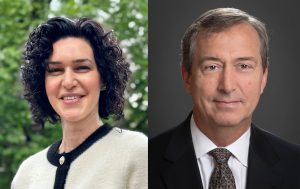 By Marina I. Feldman, MD, MBA, ABR Secretary-Treasurer, and Brent Wagner, MD, MBA, ABR Executive Director
By Marina I. Feldman, MD, MBA, ABR Secretary-Treasurer, and Brent Wagner, MD, MBA, ABR Executive Director
2025;18(3):2
The ABR governing board has three legal duties: the “duty of care,” “duty of loyalty,” and “duty of obedience.” The National Council of Nonprofits describes these as:
Duty of Care: Take care of the nonprofit by ensuring prudent use of all assets, including facility, people, and goodwill.
Duty of Loyalty: Ensure that the nonprofit’s activities and transactions are, first and foremost, advancing its mission; Recognize and disclose conflicts of interest; Make decisions that are in the best interest of the nonprofit corporation; not in the best interest of the individual board member (or any other individual or for-profit entity).
Duty of Obedience: Ensure that the nonprofit obeys applicable laws and regulations; follows its own bylaws; and that the nonprofit adheres to its stated corporate purposes/mission.
In reference to the duty of care, the volunteer governors who sit on the ABR Board recognize their obligation to serve as stewards of the fees collected from diplomates and candidates that fund the organization’s activities. These resources allow the ABR to administer the exams and programs that support board certification as a recognized valuable credential.
Click HERE to read more.

International Medical Graduate Alternate Pathway Update
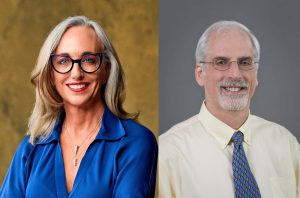 By Cheri L. Canon, MD, ABR President, and John A. Kaufman, MD, MS, ABR President-elect
By Cheri L. Canon, MD, ABR President, and John A. Kaufman, MD, MS, ABR President-elect
2025;18(3):3
The ABR’s International Medical Graduate (IMG) Alternate Pathway offers a way for individuals trained in residencies outside the United States and Canada to become board certified. The pathway represents the ABR’s interest in recognizing the knowledge and skill of appropriately trained and highly qualified people from around the world.
We have revised the pathway several times in the past three years, including removing the requirements for nuclear radiology training and for a prospective plan (approved individuals may now receive up to two years of credit for training prior to their application and submission of a Sponsoring Department Agreement). The current program also permits part-time status and discontinuous training, if the pathway is completed within six years from training start date for medical physics, eight years for diagnostic radiology and radiation oncology, or 10 years for interventional radiology.
Click HERE to read more.

Rigorous Development Processes Ensured Remote Exam Platform Success
By Michael Yunes, MD, ABR Associate Executive Director for Radiation Oncology; Mary S. Newell, MD, ABR Associate Executive Director for Diagnostic Radiology; Geoffrey S. Ibbott, PhD, ABR Associate Executive Director for Medical Physics; James B. Spies, MD, MPH, ABR Associate Executive Director for Interventional Radiology; and Matthew B. Podgorsak, PhD, ABR Board of Trustees Chair
2025;18(3):4
The mission of the ABR is to “certify that our diplomates demonstrate the requisite knowledge, skill, and understanding of their disciplines to the benefit of patients.” In the spring of 2020, when the extent of the global pandemic became clear, it was apparent that many of our longstanding mission-critical activities, including administering computer-based exams at testing centers as well as conducting face-to-face oral exams, were no longer acceptable. As did many other organizations, we developed remote processes to keep our candidates, volunteers, and staff safe.
Recent news of a high-profile credentialing organization experiencing problems with the development and implementation of their remote exams underscores the robust nature of the ABR’s processes and contrasts with our successful management of the transition to remote exams.
Click HERE to read more.

“That’s a Good Question!”: Recent Inquiries About the New DR Oral Exam
By Mary S. Newell, MD, Associate Executive Director for Diagnostic Radiology; Kate Maturen, MD, MS, ABR Trustee; Desiree E. Morgan, MD, ABR Governor; and Stephen F. Simoneaux, MD, ABR Governor
2025;18(3):5
Time passes quickly! The new DR Oral Exam will launch in 2028, and ABR volunteers and staff are in planning and implementation mode. Candidates, educators, and diplomates are also thinking deeply about the exam and asking on-point clarifying questions at society meetings and elsewhere. Here is a sample of what has been on people’s radars.
How will ultrasound be represented on the exam? Ultrasound will be examined in a way that feels “organic,” in that it will appear during exam sessions where it generally would in routine practice. For example, an ultrasound might be the primary study presented as part of a case to a candidate in the MSK, pediatrics, or abdomen sections, or the “next study” a candidate might request after seeing a mass on mammogram, but it will be shown only rarely in neuroradiology. Specialized ultrasound studies including thyroid, fetal, and vascular will be examined in the abdomen section.
Click HERE to read more.

Understanding the Prerequisites for the Interventional Radiology International Medical Graduate Alternate Pathway
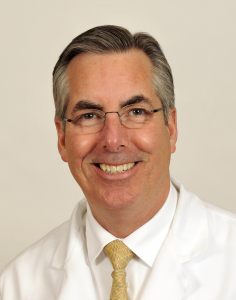
By James B. Spies, MD, MPH, ABR Associate Executive Director for Interventional Radiology
2025;18(3):6
Whether in diagnostic radiology, interventional radiology, radiation oncology, or medical physics, many international medical graduates (IMGs) wish to practice in this country and seek the confirmation of their competence that ABR certification provides. For years, the ABR has recognized the benefit of providing a pathway to board certification for IMGs with appropriate previous training in their home countries. While these IMG candidates do not complete a traditional U.S. residency, they work with the chair of their sponsoring academic department to complete a rigorous four- or five-year program. They must also pass the same Qualifying (Core) and Certifying exams as traditional candidates. These physicians help fill the growing gap between the number of graduating U.S. (or Canadian) trainees and the demand for qualified practitioners in clinical care.
The most frequently used of the ABR IMG alternate pathways is diagnostic radiology (DR). The primary prerequisites for entry into the pathway are completion of a clinical year (either in another country or in the U.S.), completion of a DR training program of at least three years in another country, and official confirmation that the candidate is authorized to practice DR in that country. The full requirements may be found here.
Click HERE to read more.

Frequently Asked Questions About OLA Scoring
By Kalpana M. Kanal, PhD, ABR Trustee; Ben Babcock, PhD, ABR Associate Director of Psychometrics; Geoffrey S. Ibbott, PhD, ABR Associate Executive Director for Medical Physics; Jennifer Stickel, PhD, ABR Trustee; and Matthew B. Podgorsak, PhD, ABR Board of Trustees Chair
2025;18(3):7
In a recent Beam article, ABR Associate Director of Assessments Research and Strategy Brooke Houck, PhD, wrote about how OLA scoring provides an accurate representation of diplomates’ knowledge. Her article summarizes the scoring process and explains how a diplomate’s score changes depending on the question asked and its rating.
On March 11, 2025, Drs. Babcock, Kanal, and Ibbott presented an ABR webinar on OLA scoring to 210 members of the American Association of Physicists in Medicine (AAPM). While we answered some questions live and in the session chat, we could not cover all 63 questions in the allotted time. A recording of the webinar together with a compilation of the questions and our responses are posted on the AAPM website.1 In follow-up to Dr. Houck’s article, below is a subset of the questions from the webinar that may help diplomates understand the OLA scoring process better.
Click HERE to read more.

Anxiety Becomes Excitement on Match Day for New Resident
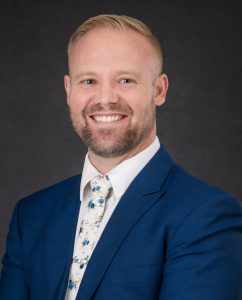
By Garrett Barfoot, MD
2025;18(3):8
On Monday, March 17, I felt a wave of relief seeing I was matching at a diagnostic radiology program. What followed were anxious days filled with real estate searches, sleepless nights, and heartfelt conversations about how this would affect our young family.
Since my international medical school doesn’t receive official Match results, we planned a small celebration on Friday, March 21, with close friends and family joining via video call. In a pro sports draft day-style reveal, we had hats from several programs ready. Just before the announcement, I found a quiet place to kneel and offer a prayer to be sent where I could serve best.
When my wife read “Detroit Medical Center” for my transitional year, we were relieved to stay in our Michigan home a bit longer. Then came “Loma Linda University” for diagnostic radiology, and the room erupted with joy. Over the video call, my mom, who lives in Southern California, let out comical, celebratory screams at the news that we were coming home.
Click HERE to read more.

Fairness Is on Her Mind When She Writes Exam Questions

By Rodney Campbell, ABR Communications Manager
2025;18(3):9
As an interventional radiologist who teaches and performs clinical work, Divya Kumari, MD, keenly understands her role as an ABR volunteer who writes Qualifying (Core) Exam questions.
It’s a balancing act.
“I have a good idea of what (candidates) should know, particularly diagnostic residents,” she said. “We’re writing questions they have to be able to answer. Often when I’m working, I’m also paying attention to the scope of what they understand to make sure what we’re writing isn’t too difficult and it’s not intended toward fellowship level for IR.”
Dr. Kumari, an assistant professor of radiology at UChicago Medicine, is in her second year of writing questions for the Core. She earned her medical degree from St. George’s University School of Medicine, performed her residency at Case Western Reserve College of Medicine and completed a vascular and interventional radiology fellowship at the University of Chicago Medical Center.
Click HERE to read more.

He Always Looks on the Bright Side of Life
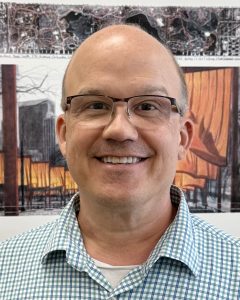
By Rodney Campbell, ABR Communications Manager
2025;18(3):10
When it comes to choosing a radiation oncologist, Jamie Cesaretti, MD, has one piece of advice: “Try to pick an optimist.”
Dr. Cesaretti has long believed in the value of optimism, a perspective that has served him well since his third year of medical school at SUNY Stony Brook. He was inspired by a lecture from Jonathan Haas, MD, at NYU Langone Hospital on Long Island in the late 1990s.
The tone of the talk stuck with him even more than the content.
“I remember that he was just so positive and engaged … it made a major impression,” Dr. Cesaretti said.
The two physicians recently reconnected, and Dr. Haas was surprised to learn the impact of his presentation. He told Dr. Cesaretti he had only been out of residency for a few months at the time.
“I told him, ‘I had no idea what you were doing, but you were extremely charismatic and optimistic,’” Dr. Cesaretti said with a smile. “I knew I needed to figure out what he did and thanked him for being such a kind mentor so early in both our careers.”
Click HERE to read more.

Formative Elements of Online Longitudinal Assessment (OLA)
By David Laszakovits, MBA, ABR Communications Director, and Mary S. Newell, MD, ABR Associate Executive Director for Diagnostic Radiology
2025;18(3):11
When designing Online Longitudinal Assessment (OLA), the ABR set out to create an assessment tool that not only provides a measure of summative performance but also serves as a formative evaluation instrument.
Immediately after an OLA question is answered, the participant is provided with the correct answer, a short rationale, and a reference. These formative elements are often cited by diplomates as one of the most appreciated aspects of OLA. On an OLA satisfaction survey in 2023, over 76% of respondents agreed or strongly agreed that OLA helped them identify and remediate clinical knowledge gaps. One diplomate commented, “I enjoy the questions. They reveal to me where to improve my knowledge base.”
Click HERE to read more.
OLA Reminders at Halfway Point of 2025
2025;18(3):12
An important date is coming for diplomates in Continuing Certification who haven’t started answering Online Longitudinal Assessment (OLA) questions yet this year. August 3 is the last day when they can start participating and still be able to reach their annual progress requirement which, for most, requires answering 52 questions.
Waiting until that date to begin answering questions impacts the program’s flexibility that participants enjoy. Those diplomates would need to answer all their remaining question opportunities to avoid forfeits, thus losing the ability to skip some weeks or decline questions.
Here are a couple of other things for diplomates to consider as they assess their OLA participation halfway through the year.
Click HERE to read more.

June 10 Blog
Meet Our Four Associate Executive Directors
June 3 Blog
Standard Setting Produces Fair Results on Initial Certification Exams
May 20 Blog
Her Volunteer Duties Cover the Range of Certification
May 13 Blog
Physicist’s Family Reunion Takes Root in Alabama
May 7 Blog
Medical School Student Has Long Held Radiology Dreams
April 29 Blog






